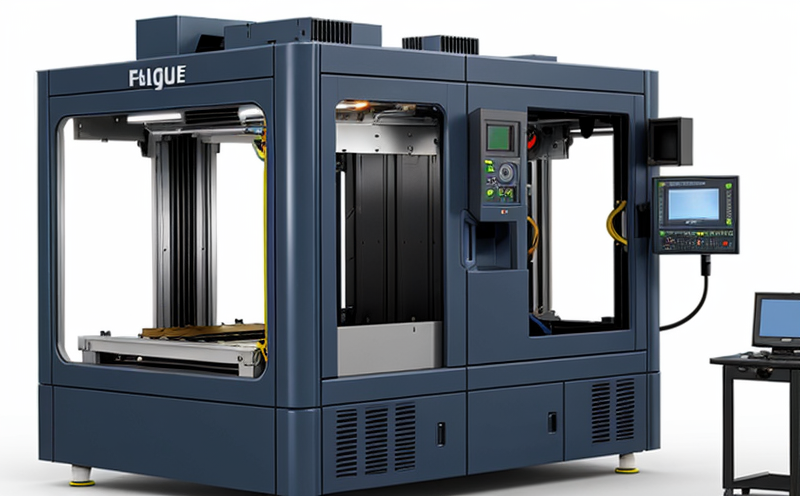ISO 9585 Fatigue Testing of Bone Plates and Implants
The ISO 9585 fatigue testing standard is a critical component in ensuring the reliability, durability, and safety of bone plates and implants used in orthopedic surgeries. This testing method evaluates how materials perform under cyclic loading conditions that mimic real-world usage scenarios. Compliance with this international standard ensures that medical devices meet stringent quality and performance criteria.
During fatigue testing, samples undergo repeated stress cycles until failure occurs. The primary goal is to determine the number of cycles before a specimen fails or to establish its endurance limit—a measure indicating when the material begins to exhibit signs of wear or permanent deformation under cyclic loading. This information helps manufacturers optimize designs and select appropriate materials for their products.
The testing process typically involves carefully preparing specimens, mounting them in specific fixtures designed to simulate clinical conditions, applying controlled loads at varying rates, monitoring displacement and strain, recording data throughout the test duration, and analyzing results according to predefined criteria outlined in ISO 9585.
Accurate specimen preparation is crucial for obtaining meaningful fatigue life data. Factors such as surface finish, geometry, size, and orientation significantly impact test outcomes. Therefore, it's essential that labs adhering to this standard possess expertise in handling delicate medical components without introducing errors into the testing process.
In addition to mechanical properties like yield strength and ultimate tensile strength (UTS), fatigue performance also depends heavily on microstructural features within metallic alloys commonly used for bone plates and implants. For instance, grain size distribution, precipitate formation, and residual stress levels all play key roles in determining how well these materials can withstand repeated loading cycles without sustaining damage.
Compliance with ISO 9585 not only enhances patient safety but also supports regulatory compliance requirements set forth by agencies like the U.S. Food and Drug Administration (FDA). By demonstrating adherence to recognized international standards, manufacturers gain credibility among healthcare providers and patients alike who prefer proven solutions over experimental ones.
Let's delve deeper into some real-world applications of this testing method:
- Orthopedic Surgery Success Rates: Accurate fatigue testing ensures that bone plates remain intact throughout healing processes, reducing revision surgery rates and improving overall patient outcomes.
- Material Selection: Manufacturers can use this data to select optimal materials based on their desired fatigue characteristics. For example, certain nickel-titanium alloys known for their superelastic properties show excellent resistance to cyclic loading compared to traditional stainless steel alternatives.
- Safety Assurance: Regular monitoring of fatigue behavior helps identify potential weaknesses early in the product lifecycle, allowing companies to address issues before they become critical problems affecting end users.
Benefits
The benefits of ISO 9585 fatigue testing extend beyond mere compliance; they encompass enhanced performance, improved safety, and greater market acceptance. Here’s why this type of testing is beneficial:
- Increased Reliability: By simulating actual use conditions through cyclic loading, labs can uncover hidden flaws that might otherwise lead to premature failures.
- Patient Safety: Ensuring that devices meet rigorous fatigue testing requirements reduces the risk of adverse events, thereby protecting both patients and healthcare providers.
- Regulatory Approval: Meeting international standards like ISO 9585 demonstrates a commitment to quality, which is increasingly important as regulatory bodies tighten scrutiny on medical device manufacturers.
- R&D Optimization: The insights gained from fatigue testing help refine design iterations more efficiently by pinpointing areas needing improvement early in the development process.
Why Choose This Test
Selecting ISO 9585 fatigue testing for bone plates and implants offers several advantages:
- Accurate Evaluation: This standard provides a standardized approach to evaluating the cyclic loading behavior of materials, ensuring consistent results across different laboratories.
- Comprehensive Coverage: ISO 9585 covers various aspects of fatigue testing, including specimen preparation, fixture design, load application methods, and data interpretation techniques.
- International Recognition: Adhering to this international standard enhances the reputation of manufacturers by aligning with global industry best practices.
- Cost-Effective Solutions: Early identification of weak points through fatigue testing allows for cost-effective design modifications before full-scale production begins, potentially saving substantial amounts in development costs.
Environmental and Sustainability Contributions
Incorporating ISO 9585 fatigue testing into the manufacturing process of bone plates and implants contributes positively to environmental sustainability efforts:
- Efficient Material Use: By optimizing designs based on fatigue test results, less material is wasted during production processes. Eco-Friendly Manufacturing Processes: The use of recycled materials in some cases can be encouraged when testing identifies robust alternatives to virgin resources.





